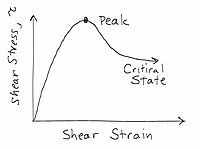
Photo from wikipedia
Abstract Sucrose is a commonly used energetic material simulant for β -HMX. However, its behavior under extreme loading conditions remains poorly understood. Pressure-Shear Plate Impact (PSPI) experiments have been conducted… Click to show full abstract
Abstract Sucrose is a commonly used energetic material simulant for β -HMX. However, its behavior under extreme loading conditions remains poorly understood. Pressure-Shear Plate Impact (PSPI) experiments have been conducted to provide an experimental foundation for developing a suitable constitutive model for sucrose. Experiments have been performed at two different nominal normal stress values, 3 and 9.5 GPa, with nominal shear strain-rates of the order of 10 6 s − 1 . Sucrose exhibits a shear strength of ∼400-500 MPa in this pressure range, with a relatively small pressure sensitivity. However, pronounced strain softening is observed in sucrose at sufficiently large shear strains - even a dramatic drop in shearing resistance in some cases. A thermodynamically-consistent constitutive theory is presented to model the thermoelastic, thermo-viscoplastic response of sucrose. The use of the logarithmic strain and an appropriate set of invariants allows for separation of the Cauchy stress into pressure and deviatoric terms. A complete Mie-Gruneisen equation of state is presented to model the volumetric behavior while the deviatoric response is captured through the Johnson-Cook Model. The material model is able to capture experimental observations and predicts localization in the form of adiabatic shear bands, which explains the catastrophic drop in shearing resistance of sucrose observed in the experiments. Such localization events carry important implications for energetic materials in the context of hot-spot formation and underline the importance of dynamic shearing strength measurements.
Journal Title: Journal of the Mechanics and Physics of Solids
Year Published: 2021
Link to full text (if available)
Share on Social Media: Sign Up to like & get
recommendations!